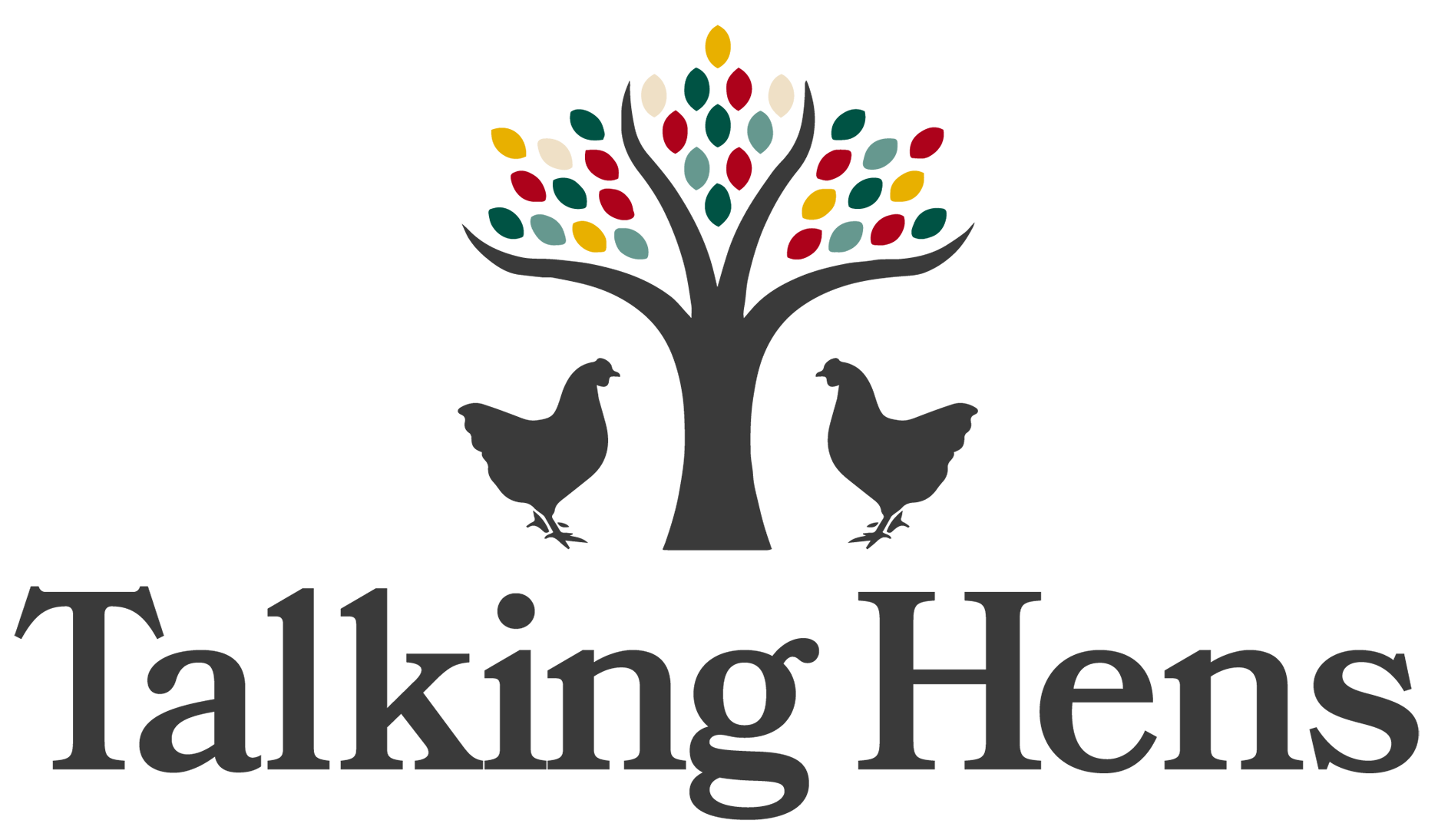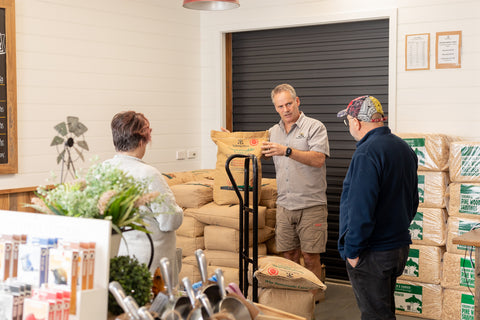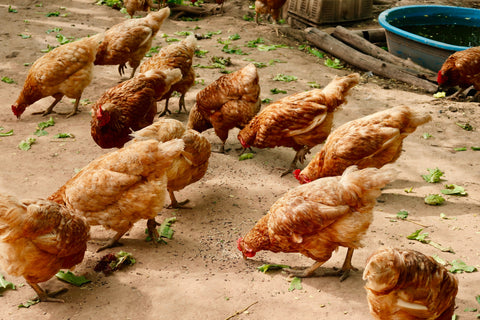There is a range of options when it comes to providing your hens with their chicken feed. Here is a brief description of the main forms of chicken feed that you are likely to encounter or use.
Scratch Mix
This type of chicken feed consists of "whole" grains that haven't been combined with other ingredients. It is often called a "scratch mix" and may come in a crushed format as well.
Scratch mix is simply a selection of grains such as corn (maize), wheat, barley, sunflower seeds, etc. that are thrown out for chickens to peck and scratch at. This is certainly not a "complete" diet for chickens, whether laying or not, as it doesn't contain the micronutrients needed, such as amino acids, fats, trace elements, and minerals for good health.
Mash
A mash feed consists of a selection of crushed grains that are mixed with animal or vegetable protein meal and then combined with supplements containing the micronutrients. Animal protein meal is very common in chicken feed and comes from all the leftover, unwanted parts of animals that humans don't want to eat. Vegetarian diets commonly contain soybean meal, which is high in protein.
Mash feed is designed to be a "complete" chicken diet with all the needed vitamins, trace elements, minerals, and vitamins contained in it. Mash is good for laying hens as it causes the gut to work harder and stay healthier relative to other feed formats. A potential constraint is that it can support "cherry-picking" behaviour in hens and messiness in the wrong type of feeder. Using a good feeder and allowing the feed to run out entirely now and again is a useful way of reducing any potential cherry-picking behaviour.
Pellets
Pellets are made from a mash, which is then formed into a pelletised chicken feed using a heat and pressure process to bind it all together. Like mash, a pelletised feed contains a "complete" diet for chickens but tends to cause the hen's gut to work less efficiently relative to a mash feed. Pelletised feed also tends to be quite bland for chickens due to all of the various components being fused together into a single "tablet".
Crumble
A crumble form of feed is often fed to young pullets (a hen not yet in lay) and is made from pellets, which are then broken down into smaller particle sizes. The smaller particle sizes of a crumble make it easier for young hens, such as chicks, to eat the feed. It does retain the same "bland" nature of pelletised feed.
The main thing to keep in mind is that for good health and good eggs, you need to be feeding your hens a "complete" feed that contains the right combination of amino acids, fats, trace elements, and minerals. A better feed will contain higher levels of good-quality ingredients, irrespective of it being in a mash, pellet, or crumble format. It will also support good gut health, feather growth, and egg-laying over the long term.






Comments (1)
Very interesting send me updates thanks a milliòn.